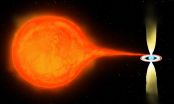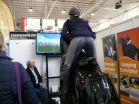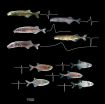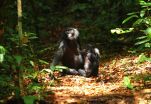HIV grows despite treatment, study finds
2015-08-04
(Press-News.org) HIV can continue to grow in patients who are thought to be responding well to treatment, according to research by the University of Liverpool.
During treatment for HIV the virus hides in blood cells that are responsible for the patient's immune response. The virus does this by inserting its own genetic information into the DNA of the blood cells, called CD4 Tlymphocytes.
The study by the University's Institute of Infection and Global Health measured the levels of integrated HIV in the CD4 cells of patients undergoing uninterrupted treatment for up to 14 years, and compared patients receiving treatment for different lengths of time.
The researchers discovered that the amount of HIV found to be integrated in the CD4 cells was undiminished from year 1 to year 14.
The research demonstrates that whenever a CD4 cell multiplies to produce more cells, it copies itself and also copies the HIV genes. This process - a sort of silent HIV replication - means the virus does not need to copy itself, produce new virus particles, and infect new CD4 cells - but is automatically incorporated at the birth of the cell.
Anti-retroviral therapy is given to HIV patients to stop the production of new virus which prevents the infection and death of CD4 T-lymphocytes and the further progression of the disease.
Advances in anti-retroviral therapy over the last 30 years mean that most patients can have their virus suppressed to almost undetectable levels and live a long and healthy life. It had been thought that after many years of successful treatment, the body would naturally purge itself of the virus.
Professor Anna Maria Geretti, who led the study, said: "This research shows that sadly, the HIV virus has found yet another way to escape our treatments.
"We always knew HIV is difficult to suppress completely and that it hides inside CD4 cells, but we always hoped that as the body gradually renews its CD4 cells that the hidden HIV would die out. We were surprised to find that the levels of HIV integrated in the CD4 cells didn't reduce over the 14-year period.
"The good news is that we did not see any worsening over time, but the bad news is that these findings really cast doubt over whether HIV can be 'cured' by increasing immune cell responses against it - a strategy that now looks like it will eventually fail."
The results are published in the journal 'EBioMedicine'.
INFORMATION:
ELSE PRESS RELEASES FROM THIS DATE:
2015-08-04
A super-dense star formed in the aftermath of a supernova explosion is shooting out powerful jets of material into space, research suggests.
In a study published today, a team of scientists in the Australia and the Netherlands has discovered powerful jets blasting out of a double star system known as PSR J1023+0038.
It was previously thought that the only objects in the Universe capable of forming such powerful jets were black holes.
PSR J1023+0038 contains an extremely dense type of star astronomers call a neutron star, in a close orbit with another, more normal ...
2015-08-04
Flight simulators for the training of air pilots are well known. But what about riding simulators? Although the first horse simulator was used at the French National Equestrian School in Saumur already in the 1980s, riding simulators for dressage, show jumping, polo or racing, have become available only recently. They look like horses and respond to the aids of the rider via sensors which measure the force exerted by the reins and the rider's legs. Via a screen in front of the simulator, the rider immerses himself into a virtual equestrian world.
Simulators are aimed ...
2015-08-04
Scientists first had to re-think death before they could develop a way of testing the potential harm to the environment caused by thousands of chemicals humankind uses each day.
Researchers led by Dr Roman Ashauer, of the Environment Department at the University of York, refined the technique of survival analysis used routinely by toxicologists, biologists, medical researchers and engineers. The research could pave the way for testing the estimated 15,000 substances discovered daily.
Survival analysis which helps to predict a huge range of functions such as the survival ...
2015-08-04
New research by scientists at New Zealand's University of Otago and GNS Science is helping to solve the puzzle of how bacteria are able to live in nutrient-starved environments. It is well-established that the majority of bacteria in soil ecosystems live in dormant states due to nutrient deprivation, but the metabolic strategies that enable their survival have not yet been shown.
The researchers took an extreme approach to resolving this enigma.
They studied a strain of acidobacteria named Pyrinomonas methylaliphatogenes that was cultivated from heated and acidic geothermal ...
2015-08-04
A study including researchers from the U.S. Department of Energy's Argonne National Laboratory and the University of Chicago found evidence that gut microbes affect circadian rhythms and metabolism in mice.
We know from studies on jet lag and night shifts that metabolism--how bodies use energy from food--is linked to the body's circadian rhythms. These rhythms, regular daily fluctuations in mental and bodily functions, are communicated and carried out via signals sent from the brain and liver. Light and dark signals guide circadian rhythms, but it appears that microbes ...
2015-08-04
The more than 200 species in the family Mormyridae communicate with one another in a way completely alien to our species: by means of electric discharges generated by an organ in their tails.
In a 2011 article in Science that described a group of mormyrids able to perceive subtle variations in the waveform of electric signals, Washington University in St. Louis biologist Bruce Carlson, PhD, noted that another group of mormyrids are much less discriminating (see illustration).
The fish with nuanced signal discrimination can glean a stunning amount of information from ...
2015-08-04
Cleaning up municipal and industrial wastewater can be dirty business, but engineers at the University of Colorado Boulder have developed an innovative wastewater treatment process that not only mitigates carbon dioxide (CO2) emissions, but actively captures greenhouse gases as well.
The treatment method, known as Microbial Electrolytic Carbon Capture (MECC), purifies wastewater in an environmentally-friendly fashion by using an electrochemical reaction that absorbs more CO2 than it releases while creating renewable energy in the process.
"This energy-positive, carbon-negative ...
2015-08-04
(BOSTON) - Super productive factories of the future could employ fleets of genetically engineered bacterial cells, such as common E. coli, to produce valuable chemical commodities in an environmentally friendly way. By leveraging their natural metabolic processes, bacteria could be re-programmed to convert readily available sources of natural energy into pharmaceuticals, plastics and fuel products.
"The basic idea is that we want to accelerate evolution to make awesome amounts of valuable chemicals," said Wyss Core Faculty member George Church, Ph.D., who is a pioneer ...
2015-08-04
Some neutron stars may rival black holes in their ability to accelerate powerful jets of material to nearly the speed of light, astronomers using the Karl G. Jansky Very Large Array (VLA) have discovered.
"It's surprising, and it tells us that something we hadn't previously suspected must be going on in some systems that include a neutron star and a more-normal companion star," said Adam Deller, of ASTRON, the Netherlands Institute for Radio Astronomy.
Black holes and neutron stars are respectively the densest and second most dense forms of matter known in the Universe. ...
2015-08-04
From an early age, human infants are able to produce vocalisations in a wide range of emotional states and situations - an ability felt to be one of the factors required for the development of language. Researchers have found that wild bonobos (our closest living relatives) are able to vocalize in a similar manner. Their findings challenge how we think about the evolution of communication and potentially move the dividing line between humans and other apes.
Animal vocalisations are usually made in relatively narrow behavioural contexts linked to emotional states, such ...
LAST 30 PRESS RELEASES:
[Press-News.org] HIV grows despite treatment, study finds



